Holland Hotel offered grand luxury 100 years ago
Last updated 5/3/2008 at Noon
November 1, 1902, was an important day for the society people of the prosperous city of Orange.
The grand Holland Hotel opened, right by the Opera House, and for the first time, visitors to the city could stay in big-city-style splendor.
The Holland Hotel had marble floors and fine wood in the lobby.
Greek-style marble statues were part of the décor.
The dining room featured gourmet food cooked by imported chefs.
Plus, the hotel was high-tech, at least for its time.
All the rooms had electric lights, electric ceiling fans and long-distance telephone service.
Orange had grown wealthy beyond the imagination of the early settlers.
After Henry Jacob Lutcher moved his family from Pennsylvania in 1876 to start the Lutcher and Moore Lumber Co., the city grew as pine lumber and cypress shingles were shipped from Orange around the world.
Other investors followed and they, too, made fortunes in lumber.
Shops, grocery stores, general mercantile stores and other businesses flourished.
Society in that Victorian age included elaborate parties, picnics with fancy clothes and fancy carriages for transportation.
H.J. Lutcher and his wife, Miriam, built a mansion along the banks of the Sabine River on Water Street, near other mansions.
Their daughters, Miriam Lutcher Stark, and Carrie Lutcher Brown, built their mansions on Green Avenue, which became the stylish “suburb” of the 1890s.
Yes, Orange had hotels, but none to satisfy the tastes of the prominent businessmen and visitors.
Usually, the wealthy had their guests stay in their homes.
But the Holland Hotel became something to brag about.
The hotel was built at the corner of Division and Fifth streets, near the Sabine River.
The river was a popular way of travel in those days when the streets of Orange weren’t paved.
Mayor J.W. Link, who served for three years, beginning in 1900, pushed to pave the streets of Orange, according to Dr.
Howard Williams’ history book.
Link’s version of paving was to cover the streets in clam shells.
He resigned in 1903 when the city voted to close the saloons.
He said he couldn’t afford to improve the city without the tax income from the saloons.
Link, who moved to Orange in 1896 as a lawyer, invested in a lumber company and built one of the grandest mansions on Green Avenue.
But in 1900, as he began to lead the city to pave the streets, construction on the Holland Hotel was beginning.
In addition to being near the river, the hotel was also by the town’s two train depots, both along the banks of the river.
An old map shows a livery stable across the street from the hotel, which would have provided a convenient way to hire transportation.
Construction of the hotel took two years.
Charles Rein, another prominent citizen, was the project foreman.
(Orange still honors Rein and Link, with streets bearing their names.) The hotel was designed by Burt McDonald, who had done hotels in Chicago and other large cities.
William S. Eden was head of construction.
Furnishings came from England and France.
The downstairs included an elegant barbershop, plus a gift shop and an exercise room with the latest in equipment, no women allowed.
Matter of fact, women didn’t even gather in the lobby.
Dr.
Williams said proper Victorian women weren’t seen in hotel lobbies.
Maybe it was because of the stage of dress of the statues? The women had a separate wing with a second-floor gallery facing on the west side, toward what is now Farmer’s Mercantile.
In the first three years of the hotel, the Opera House was on that side, before it burned.
A Xeroxed copy of an old photograph taken at the Holland Hotel is in the files of the Heritage House Museum.
The photograph was from a 1905 costume ball held at the hotel.
The prominent guests wore elaborate, expensive costumes.
They included Frances Ann Lutcher and her daughters, Miriam (Mrs. William H.) Stark, and Carrie (Mrs. Edgar Sr.) Brown.
Also listed on the picture are Lutcher Stark, Fanny Brown, Charles Rein and R.A. Moore.
As the times changed, women were allowed into the lobby and businesses moved into the downstairs spaces.
A wide variety of groups, including high school groups and the Rotary Club, founded locally by H.J. Lutcher Stark, met and held banquets at the hotel.
Governors and senators spoke to groups and the hotel, and some stayed overnight.
The original Holland Hotel was made of red brick and included turrets.
It was remodeled in 1949 and re-opened as the New Holland Hotel in 1950.
Photographs show that the brick was covered with what appears to be stucco or stone.
The remodeling didn’t last long, though.
As Orange prospered again in the 1950s, this time from chemical plants building outside of town, the city drew another large hotel.
The Jack Tar Hotel opened in January 1957, along the Sabine River and across the street from the Holland.
Then, the Holland Hotel was dismantled and demolished.
For years, the Jack Tar used the foundation of the old hotel as a parking lot.
The Jack Tar hasn’t been used as a hotel since 1986, when it was turned into a residential home for senior citizens.
However, Hurricane Rita caused a lot of damage, and that old hotel is now empty.
And once again, city leaders are looking for a high-class hotel to establish itself in the downtown area, which is undergoing a cultural revival.
The ghosts of the Holland can still be seen though, on the old parking lot.
Marble squares and round tiles, left from more than 100 years ago, keep the tales of the hotel alive.

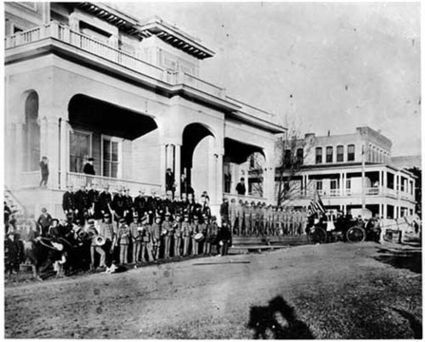
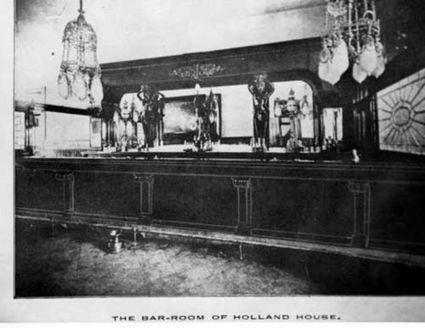
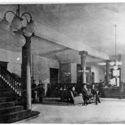
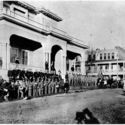
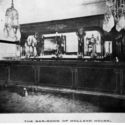













Reader Comments(0)